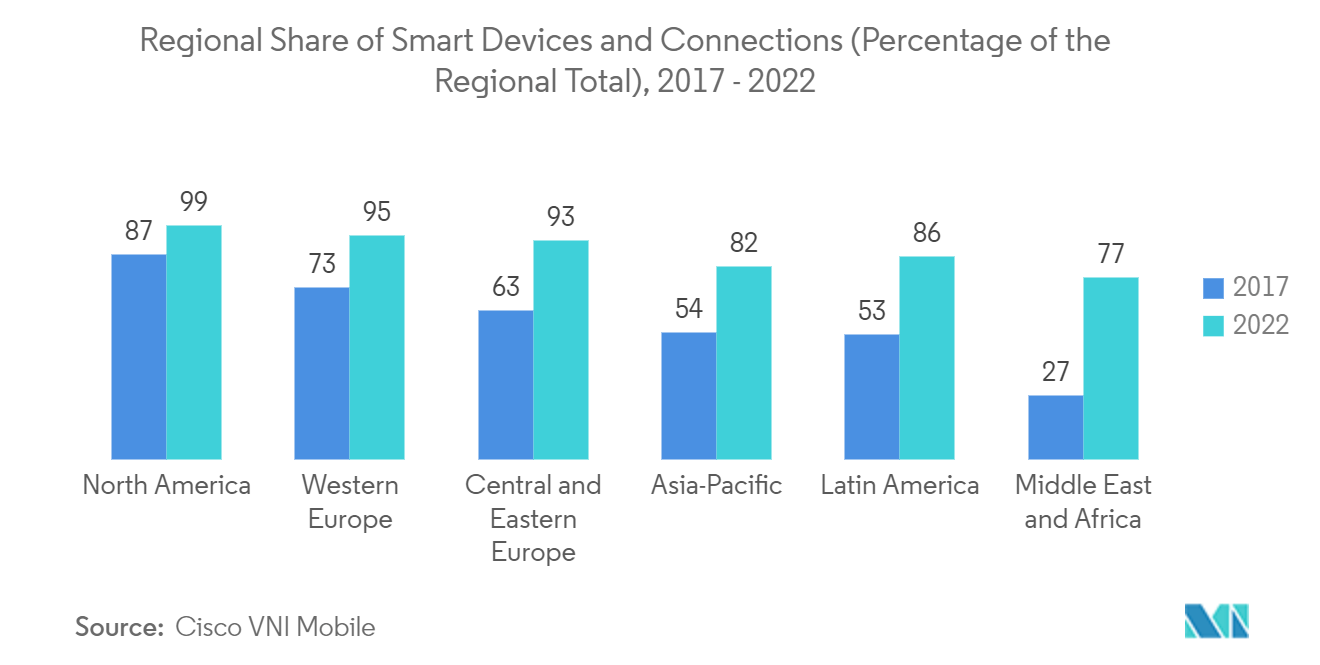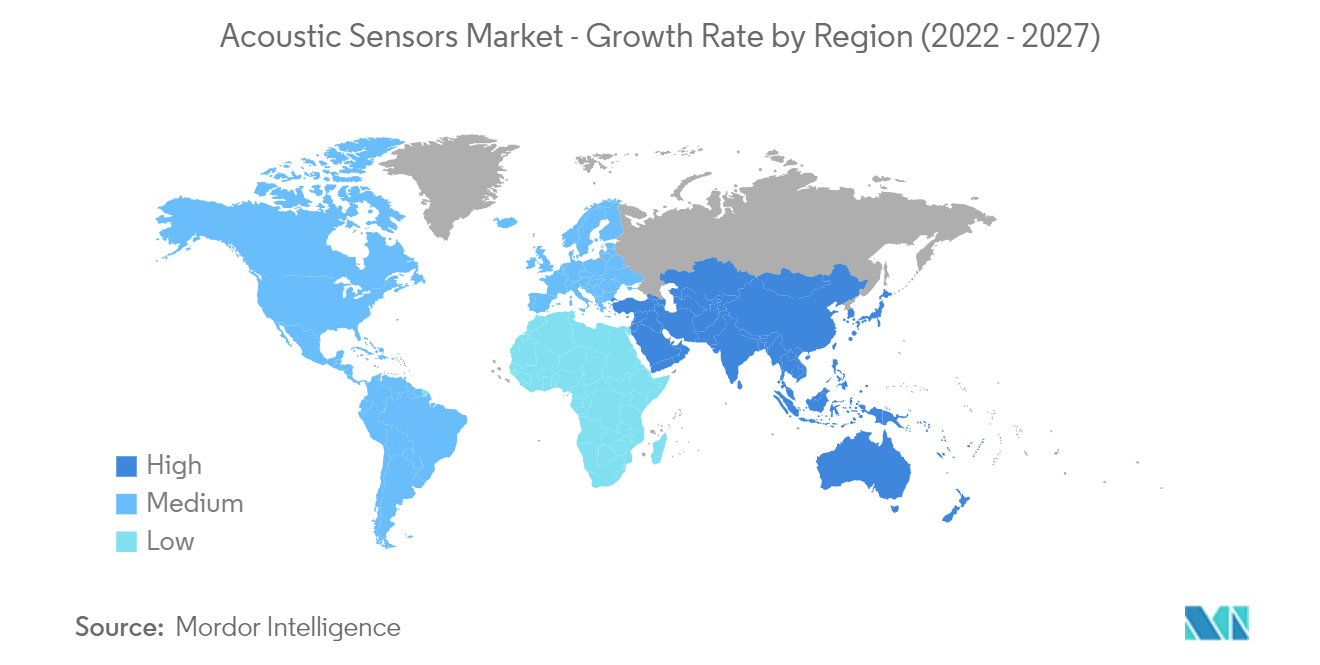Market Trends of Acoustic Sensors Industry
This section covers the major market trends shaping the Acoustic Sensors Market according to our research experts:
Consumer Electronics to Drive the Market Growth
- The consumer electronics industry is a prominent consumer of acoustic sensors, primarily driven by smartphones and laptops. Consumer electronics was one of the significant investors and adopters of acoustic sensors, which played a substantial role in developing the relevant sensors and devices.
- The acoustic sensors played a significant role in developing RF filters across various consumer and communication applications. For instance, acoustic devices are relatively simple in their composition. Due to the wide adoption of surface wave acoustic filters in the smartphone industry, the sensor materials cost dropped in the past three decades.
- Moreover, people, especially in developing countries, are buying smartphones, owing to the increase in disposable incomes and low-budget smartphones. In fact, according to a Cisco VNI Mobile report, smartphones (including phablets) will significant growth from a 50% share of total devices and connections in 2017 to over 50% (54%) by the end of 2022.
- With a relatively low deployment cost, most telephone devices and other similar gadgets have microphones/speakers installed, which support acoustic-sensing applications.
- The growing production of LTE, 4G, and 5G devices, especially 5G smartphones, is creating a massive growth opportunity for acoustic wave technology providers. RF filters are becoming standard components in these devices, as they isolate radio signals from the different spectrum bands used by various smartphones to receive and transmit information. New advanced SAW filters offer a higher performance solution than competing BAW filters in the sub-2.7 GHz frequency range, thereby having higher growth opportunities with the emergence of 5G technology.

Asia-Pacific to Witness a Significant Growth Rate
- Asia Pacific region is expected to be the fastest growing global acoustic sensor market, followed by North America and Europe, primarily due to an increase in the application of acoustic sensors in smartphones and smartwatches in the consumer electronics sector.
- The increasing focus on investments to develop infrastructure for supporting 5G technology is expected to boost the demand for RF semiconductors across the region. According to the GSMA, mobile operators in the Asia-Pacific region are expected to invest over USD 400 billion in their networks between 2020 and 2025, of which USD 331 billion will be spent on 5G deployments.
- Owing to the increasing usage of smartphones, tablets, and other electronic devices in the developed and developing economies, such as the United States, China, South Korea, Japan, and India, acoustic sensors are expected to witness growth during the forecast period.
- Most renowned smartphone manufacturers adopt RF filters in their latest 5G smartphones; LG and Samsung are few among these. The advancement in SAW sensors also enables more power-efficient RF paths in 5G and 4G multimode mobile devices at a lower cost than competing commercial solutions with similar performance metrics for original equipment manufacturers (OEMs).
- China holds the largest share of the acoustic sensor market in the Asia-Pacific due to the extensive use of acoustic sensors in consumer electronics. Other major end-user segments, such as automotive, defense, and industrial sectors that extensively adopt acoustic sensors, have very high penetration in this region.

